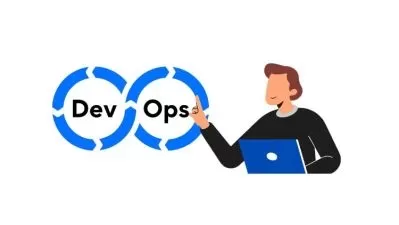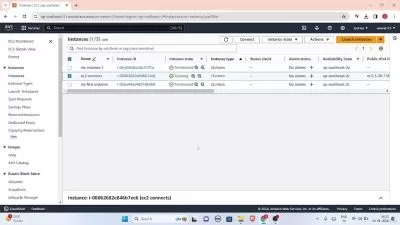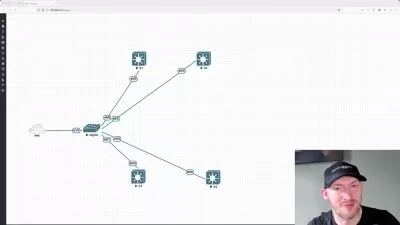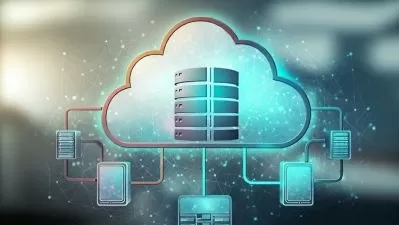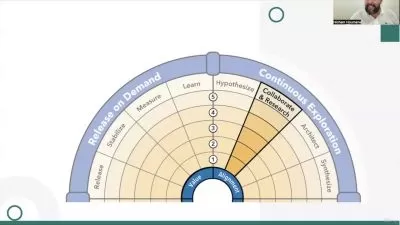About DevOpsLearn More
DevOps is an efficient software development strategy widely implemented in organizations everywhere. By integrating and automating the processes between development and IT operations, DevOps allows for continuous construction and deployment of software. The tools and principles provide a more streamlined overall process. DevOps training on Udemy can familiarize you with all of the DevOps tasks and tools.
Sort by:
Sorting
The newest
Most visited
Course time
Subtitle
Frequently asked questions about DevOps
DevOps is a development strategy that sits in the gap between software development and IT infrastructure. It brings the agile process used in development to the deployment process so that new features and bug fixes go live as soon as possible. A DevOps engineer manages this Continuous Integration(CI) and Continuous Deployment(CD) process. It is their job to design and build the IT infrastructure that takes code from code repositories, tags it for release, builds the project, and deploys it to development, test, production, and any other environments the business may use. One of the key roles of a DevOps engineer is to automate as much of this process as possible so that everything happens behind the scenes with no human intervention. They also set up monitoring tools and create reports to determine when applications need to be refactored or scaled.
Yes, you usually need to do some coding in a DevOps career. While many of the tools used in DevOps like AWS, Jenkins, Docker, Ansible, and more automate much of the day-to-day coding tasks a DevOps engineer will run into, there are still times you will have to write code. Sometimes custom deployments require scripting to configure the server environment, and a DevOps engineer will have to use their knowledge of Linux, Shell scripting, Python, and other scripting languages to complete a task. Also, many of the deployment tools, continuous integration platforms, and build tools use scripting. For example, if you are using Gradle for builds, you should know the Gradle language. Or if you are using Grunt, Gulp, or WebPack, you will have to know some JavaScript.
The length of time it will take to learn DevOps depends upon your prior experience. If you have some software, programming, and scripting skills but do not know much about Linux, it may take two or three months of study to pick up some Linux skills and learn about the type of automation used in DevOps. If you have only basic knowledge of computers, learning scripting may take a couple of extra months for a total of four or five months. That is just an estimate. It can take shorter or longer depending on the skills you already have and the time you can spend learning new skills. The training of a DevOps engineer also really never ends. There are multiple cloud platforms that you could study, including Microsoft Azure, Google Cloud Platform, and Amazon Web Services.
The coding languages you will need to know as a DevOps engineer will vary based on your work environment. Python is a great language to begin with because many applications deploy to Linux servers, and most Linux distributions come with Python built-in. Python is easy to use, is a great tool for automating tasks (what DevOps engineers basically do), and has a large community of users. Another common language used in DevOps is shell scripting. Again, this is a popular scripting language because you can find it in most Linux installations. Another language you will find often in DevOps is Java. Many build tools are written in Java, and although many of them don't require you to write Java, you may have to use a scripting language that runs on the Java Virtual Machine like Groovy to write scripts for these tools. Other languages you may run into in DevOps are Ruby, JavaScript, and Go.
Since the DevOps role straddles both software development and IT infrastructure, the skills a DevOps engineer needs are diverse. Starting at infrastructure, a DevOps engineer needs to have Linux knowledge, and Windows knowledge is a bonus. Because much of IT infrastructure is moving to the cloud, it is also important to have knowledge of cloud platforms like AWS, Microsoft Azure, or Google Cloud. There are many Continuous Integration(CI) and Continuous Deployment(CD) tools used to deploy applications to a server running on one of these cloud platforms, including Jenkins, GitLab, and Github. Working knowledge of one or a few of these tools is a requirement. A DevOps engineer should also know how to use version control tools like Git and Mercurial, configuration management tools like Chef and Puppet, containers like Docker, as well as orchestration tools like Kubernetes, Mesos, and Swarm.
There are quite a few certifications that look good on a DevOps engineer's resume because the skills required for the job are so diverse. Many in the DevOps field respect the CompTIA Linux+ certificate because of the strong Linux sysadmin skills needed to pass the test. The Docker Certified Associate certificate will prove the engineer's knowledge of containers. The AWS Certified DevOps Engineer Professional certificate is another great certificate for a DevOps engineer that shows their knowledge of this cloud platform. The Azure DevOps Engineer Expert certificate also looks good on a resume for engineers looking to work on the Azure cloud platform. Similarly, the Architecting with Google Compute certificate is a great certification for DevOps work. Other important certificates for DevOps include Certified Jenkins Engineer, Puppet Certified Professional, and Red Hat Certified Specialist in Ansible Automation.
The DevOps lifecycle contains seven phases. The first phase is continuous development. There are no DevOps tools involved in this phase, but it drives the rest of the phases. The second phase is continuous integration. Developers commit changes frequently using source control software. Then the new code is built with a tool like Jenkins. The third phase is continuous testing. Code tests automatically to determine that it works as expected. The fourth phase is continuous feedback. Feedback from users helps determine future features and bug fixes. The fifth phase is continuous monitoring. Monitoring a live application can catch bugs and performance issues before they become a bigger problem. The sixth phase of the process is continuous deployment, which means that it will continuously update the live production code with new features and fewer bugs. The last phase is continuous operations, which covers the automation of the release process.





